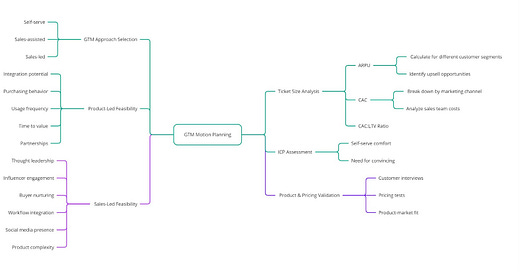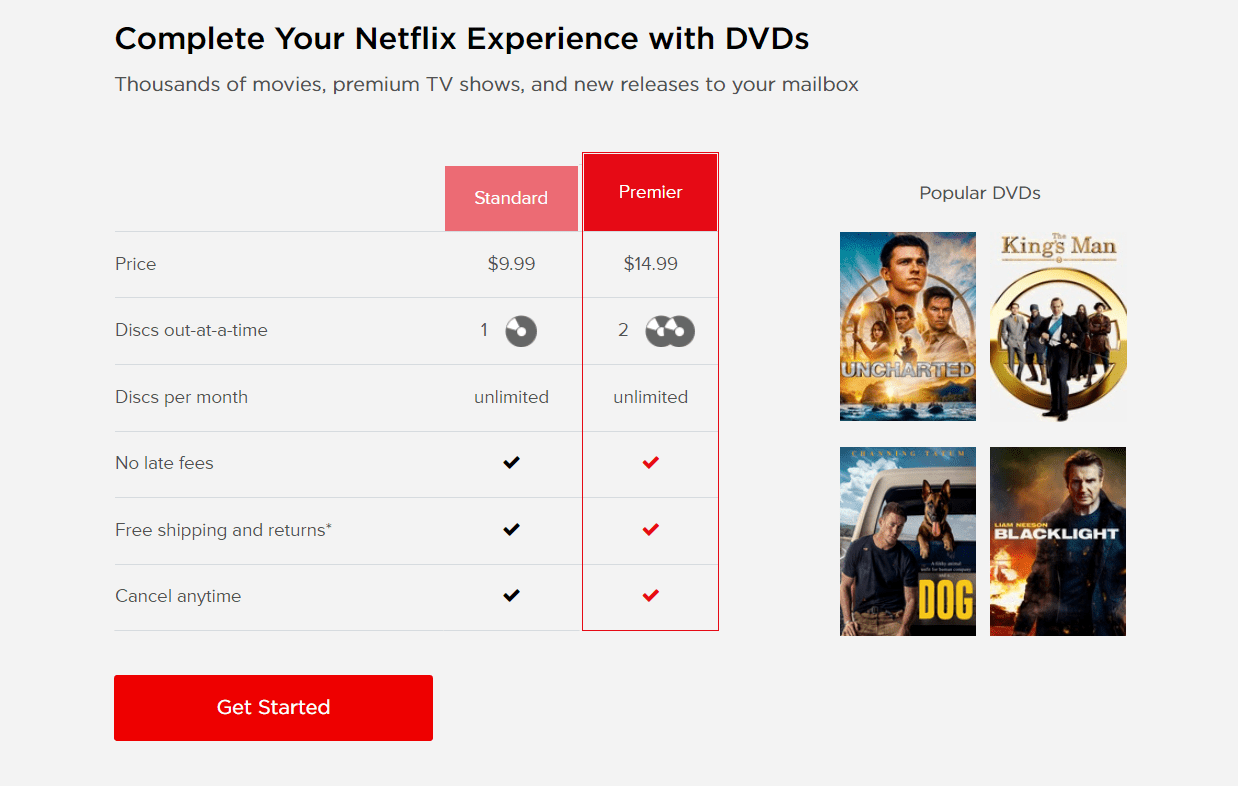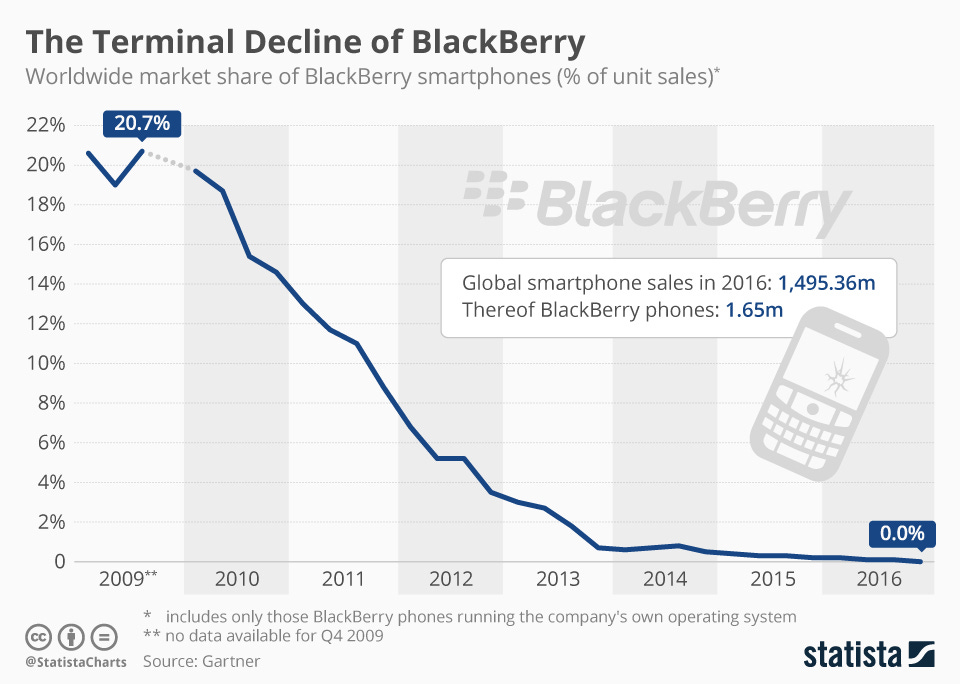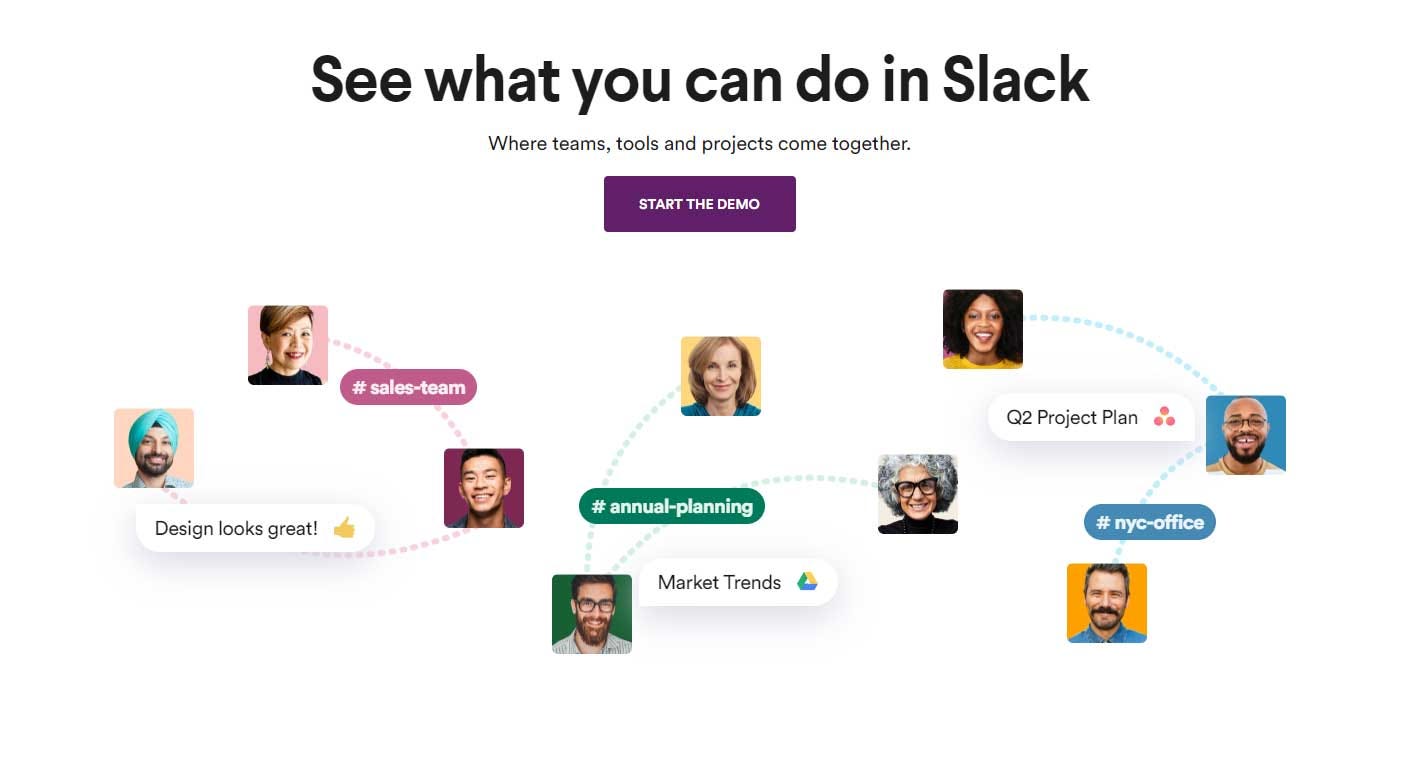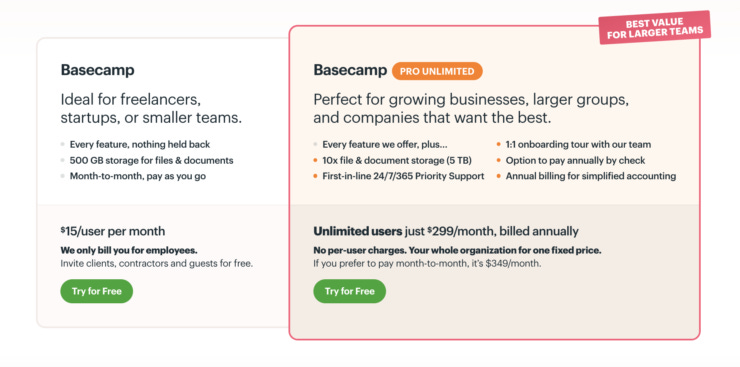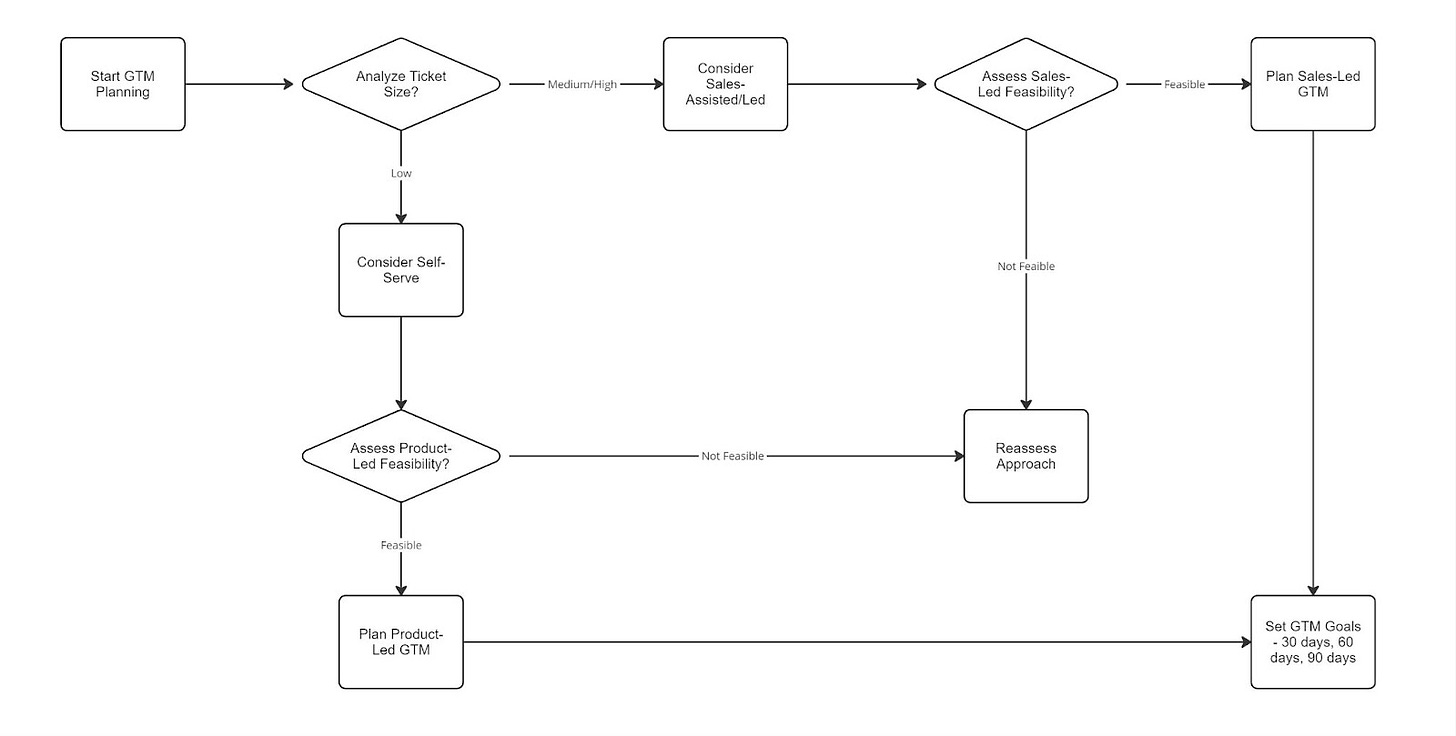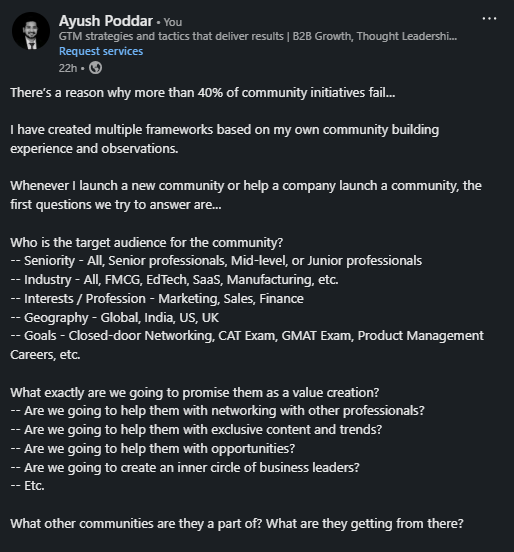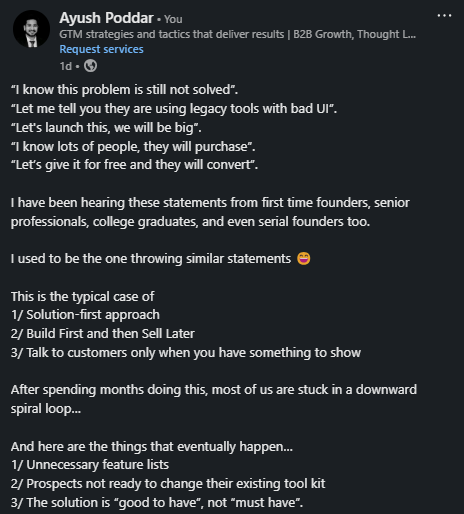Choosing the right Go-to-Market motion for sustainable growth
Discover the ways to plan go-to-market motion for your business with insights on product-led growth and sales-led growth.
Every time I launch an initiative or partner with a founder…
We spent endless hours discussing which go-to-market motion to pick..
Common Responses -
“I think we need a sales motion,”
“We need to choose the right strategy and push hard, get it in front of as many customers as possible, fast.”
“No, I believe in plg. If we build it right, they’ll come. It is highly scalable. We just need marketing and customer success .”
My relevance?
I have been building startups since 2016 and have done this exercise countless times… for us it was always a question of how to get the product out in the hands of the customer…
→ whether it would be sales motion
→ whether it would be plg / self - serve
→ or whether it would be sales process for assisting product-led growth
There is always an urge to plan everything in advance… project everything… and follow that… but it doesn't work like that.
Counter Opinion Alert - Don’t plan everything
The idea of strictly following a predefined path, especially in Go-to-Market (GTM) strategies, can be more harmful than helpful.
Fundamental truth for choosing the right GTM Motion
When it comes to choosing the right gtm motion, there are a few fundamental truths you can’t afford to overlook.
The business landscape is different. What worked yesterday might not work tomorrow.
Here’s what you need to keep in mind as you build out your effective go-to-market strategies.
1. Go-to-market motions are dynamic
Webvan, the grocery delivery service, is a perfect example for this. In the late '90s, they became the poster child for tech-driven disruption, and raised over $396 million. Their valuation was massive i.e. $8 billion with just $4 million in revenue. They aggressively planned to operate in 26 cities but failed to adjust as they expanded.
What went wrong?
- Webvan overestimated demand without validating it as they expanded.
- They didn’t adjust their GTM motion to fit the realities of different markets.
- They incurred heavy expenses—$525.4 million against $178.5 million in sales by 2000.
Result: Bankruptcy by 2001, with over $800 million lost and 2,000 jobs gone.
The takeaway? What works in the launch phase doesn’t necessarily work in the growth phase. Your chosen GTM motion must evolve as your business does.
Actionable Steps:
Start Small: Test the gtm motion for your business in a single market before scaling.
Monitor and Adapt: Regularly revisit your strategy as you expand to new markets.
Stay Agile: Be ready to pivot when market realities don’t match your initial plan.
2. Product keeps evolving
Netflix started as a DVD rental-by-mail service. Their original approach to gtm was built around this model, disrupting traditional video rental stores. But as technology and customer preferences shifted, Netflix made a hardest choice - “Disrupting themselves”.
They evolved from dvd rental to streaming and eventually to original content, and crafted playbook to drive growth.
What did they do right?
- Recognized the shift in consumer behavior towards streaming.
- Evolved their growth motion in tandem with their product or service.
- They embraced change and beat competition.
Actionable Steps:
Regularly gather feedback from free users and paid customers to understand shifting preferences.
Be willing to pivot: If your product changes, so should your GTM motion.
Invest in Innovation: Ensure your strategy supports future product developments.
3. Positioning keeps updating
Blackberry was once the go-to device for business professionals. Positioned as the ultimate communication tool, it dominated the market at one point.
But as consumer preferences shifted towards smartphones with high end features, Blackberry failed to update its positioning. Meanwhile, Apple and Samsung captured the market by positioning their products as lifestyle devices.
What did Blackberry miss?
- They were stuck to their original positioning and failed to appeal to the broader consumer market.
- Competitors who updated their positioning captured their market presence.
Actionable Steps:
Regularly assess market trends: Ensure your positioning remains relevant.
Be Open to Change: Don’t be afraid to reposition your product and try different approaches, if the market demands it.
Competitive Analysis: Keep an eye on how your competitors are positioning themselves.
4. Target prospect also changes / expands
Slack initially focused on developers and tech-savvy teams, solving communication problems in tech startups. However, as their product evolved, they realized their audience could be much broader. By shifting their inbound and outbound marketing strategies, Slack expanded its reach to marketing teams, customer support, and large enterprises, leading to explosive growth.
What did they do right?
- Recognized that their product had broader applications.
- Adjusted their go-to-market strategy to target new, diverse prospects.
Actionable Steps:
Re-evaluate your audience: Regularly assess who your product serves best.
Adjust your focus: The motion you choose depends on how your product fits in the market.
Experiment with different personas: Test different messaging and offers for varied customer segments like sales, product and marketing teams in case of companies like Slack.
5. Marketing channels often introduce new features and update algorithms (paid, inbound etc)
In Facebook’s early days, brands could easily reach their audience organically. But as Facebook evolved, introducing new algorithms, organic reach plummeted. Brands that didn’t adjust their marketing and sales strategy saw their engagement and reach decline. Those who embraced paid advertising and new features, however, thrived.
Actionable Steps:
Keep up with updates on key marketing platforms.
Shift resources to paid advertising if organic reach declines.
Test new features and strategies as they become available.
Planning your GTM motion
Before diving immediately into executing your Go-to-Market (GTM) strategy, it's essential to have thorough discussions around key aspects that will shape your approach for the growth of your business.
By addressing these points, you can avoid common pitfalls, ask the right questions, and ensure your overall strategy is aligned with your business goals and market realities.
So I always propose to discuss on following items before making a plan -
1/ What’s the Ticket Size? Does it allow sales team cost in Per Unit Revenue?
If the revenue generated per unit sale doesn't justify the cost of having a sales team, then a sales-assisted or sales-led gtm or sales-led approach may not be viable.
Example: Imagine a SaaS company selling a product for $50/month. If the cost of acquiring each customer is $500 through a sales team, it would take 10 months just to break even. For a lower ticket size like this, a self-serve model might be more appropriate.
Questions to Ask:
- What is the average revenue per user (ARPU)?
- What is the customer acquisition cost (CAC) for different channels?
- Can we achieve a positive CAC:LTV (Customer Lifetime Value) ratio with our current pricing?
Framework to Use: Unit Economics Analysis - Calculate CAC, LTV, and payback period to determine the feasibility of a sales-led approach.
Experiments:
1. Run a pilot with a self-serve model (or product-led gtm) for smaller ticket sizes and measure the CAC:LTV ratio.
2. Conduct A/B tests with different pricing tiers to assess the impact on sales efficiency.
2/ Is our ICP comfortable paying and using on its own? Or need convincing and assurance?
Identifying whether your Ideal Customer Profile is capable of making a purchasing decision independently is vital. Some customers, particularly in segments like Indian SMBs (a segment of B2B companies), may require more hands-on engagement, assurance, and education.
Example: Consider Freshworks, which targets SMBs, including those in India. They realized early on that their audience needed more convincing and a personal touch. They built a robust inside sales team focused on education and relationship building.
Questions to Ask:
- How familiar is our audience with similar products?
- What are the common objections or concerns they have during the buying process?
- Do they typically make purchasing decisions independently, or do they require a consultative approach?
Framework to Use: Buyer’s Journey Mapping - Understand the stages of decision-making for your ICP and identify where they might need additional support or education.
Experiments:
1. Set up a small sales team to handle high-touch engagements and measure conversion rates.
2. Launch an educational content series (webinars, case studies) and track its impact on lead nurturing.
Another Example: HubSpot initially tried to sell directly to SMBs without much success. They quickly learned that their ICP needed more education and assurance, so they developed an inbound marketing strategy that educated prospects, making them more comfortable with the purchase.
3/ Is our product and pricing validated?
Before you choose the right motion and scale your GTM efforts, it’s essential to validate both your product and pricing. If your product doesn't resonate with your target audience or if your pricing is off, no amount of marketing or sales efforts will compensate.
Example: Airbnb spent significant time validating their product and pricing by directly engaging with hosts and guests. They conducted numerous 1:1 interactions, iterating on their offering based on real-world feedback before scaling.
Questions to Ask:
- Have we tested our pricing with a diverse group of customers?
- What feedback have we received on our product’s value proposition?
- Are there signs of product-market fit?
Framework to Use: Lean Startup Validation - Use MVP (Minimum Viable Product) and customer interviews to validate product-market fit and pricing.
Experiments:
1. Offer a limited-time discount to new customers and measure uptake.
2. Conduct direct interviews with a sample of customers to gather pricing feedback.
Slack famously validated its product through internal use before going public. They realized that if their product solved their own problems, it would likely do the same for others. This validation phase was crucial to their explosive growth.
4/ If our ticket size is low, just go for self-served; If medium to high, go for Sales assisted or Sales enabled
Your GTM motion to reach customers should align with your ticket size to maintain sustainable unit economics. Lower ticket sizes are often better suited to self-serve models, while higher ticket sizes may justify the investment in hiring sales reps.
Example: Zendesk initially did market entry targeting small businesses with a low-cost self-serve model. As they moved upmarket to larger enterprises with higher ticket sizes, they shifted to a sales-assisted model to provide the necessary support and assurance for larger deals.
Questions to Ask:
- What is the break-even point for our CAC in different GTM models?
- How does customer size correlate with support and sales needs?
- What is the expected deal size in different customer segments?
Framework to Use: Go-to-Market Strategy Matrix - Map ticket size against sales complexity to determine the appropriate GTM model.
Experiments:
1. Test a self-serve model with immediate gratification for low-ticket customers.
2. Launch a dedicated sales enablement team for high-ticket customers and measure the impact on conversion rates metrics.
Consider Basecamp, which intentionally kept their product pricing low and focused on self-service. They knew that trying to support a sales team with such a low ticket size would be unsustainable, so they invested in creating a seamless self-serve experience instead.
5/ PLG or Self-Serve feasibility check
When choosing a product-led approach or self-serve model, it's essential to ensure that your product and market conditions align with this approach. Here’s what to consider:
5.1/ Are there any competitors or alternate players we can directly latch on?
Think of how Asana leveraged integrations with tools like Slack and Google Workspace. By latching onto existing ecosystems, they were able to tap into an already engaged user base and offer seamless workflow integration.
Questions to Ask:
- Who are the major players in our ecosystem?
- What integrations or partnerships could enhance our product's value?
- How can we differentiate while leveraging these ecosystems?
Framework to Use: Ecosystem Mapping - Identify key players and potential partners within your industry.
Experiments:
1. Test integrations with popular tools and measure user engagement.
2. Launch a co-marketing campaign with a complementary product and track its impact.
5.2/ How can we immediately fit into existing Workflow without disturbing the existing toolkit?
Miro, the online whiteboard tool, designed its product to easily integrate into existing workflows without disrupting tools like Jira, Slack, or Google Drive. This seamless integration encouraged adoption among teams that were already comfortable with their current toolkit.
Questions to Ask:
- What tools are our customers currently using?
- How can our product complement, rather than compete with, these tools?
- What potential friction points might arise during integration?
Framework to Use: Customer Workflow Analysis - Map out typical customer workflows and identify where your product fits in.
Experiments:
1. Conduct user testing to identify potential friction points while using your product.
2. Develop onboarding materials that highlight how to integrate your product with existing tools.
Dropbox's early success was partly due to its ability to seamlessly integrate with existing file systems on users' computers. This reduced friction and made adoption easy for new users.
5.3/ What’s the prospect’s behavior with other purchases?
Consider how Adobe Creative Cloud observed that design professionals often preferred subscription models over one-time purchases, as it allowed them to stay up-to-date with the latest tools and features. Adobe adjusted its pricing strategy to offer a subscription model, which aligned with the buying behavior of its target market.
Questions to ask:
- How do our prospects typically purchase similar products?
- What payment models are they most comfortable with?
- How do they typically evaluate and adopt new tools?
Framework to Use: Buyer Persona Analysis - Develop detailed personas that include purchasing behaviors and preferences.
Experiments:
1. Offer different pricing models (e.g., subscription vs. one-time payment) and measure the impact on conversions.
2. Conduct a survey to understand the preferred purchasing methods and contract value / pricing for your audience.
Adobe’s transition to a subscription-based model was initially met with resistance, but by aligning with customer purchasing behavior, they eventually saw a significant increase in adoption and revenue.
5.4/ How frequent is the usage and how fast can we show product value?
Zoom demonstrated value almost immediately during the pandemic, as it quickly became an essential tool for remote work. Their ability to showcase product value within minutes of use led to widespread adoption.
Questions to Ask:
- How long does it take for a user to see value from our product or as they decide to try the product?
- What features or aspects of the product drive the most immediate value?
- How can we accelerate the time to value?
Framework to Use: Time-to-Value Analysis - Map out the customer journey and identify key moments when users experience value.
Experiments:
1. Implement in-app messaging that highlights key features to new users.
2. Test different singup flows to reduce the time it takes for users to experience value.
Zoom’s ease of use and immediate value during virtual meetings made it an indispensable tool almost overnight, showcasing the importance of delivering quick wins to new users.
5.5/ Can we align partners, experts, and ecosystem players to talk about us?
Salesforce effectively built an entire ecosystem of partners and consultants who evangelize their products. By empowering these stakeholders, Salesforce expanded its reach and credibility in the market.
Questions to Ask:
- Who are the key influencers and partners in our industry?
- How can we incentivize them to promote our product?
- What co-marketing opportunities exist?
Framework to Use: Partner Ecosystem Strategy - Identify potential partners and develop a plan to engage them.
Experiments:
1. Launch a partner referral program and track its effectiveness.
2. Collaborate with industry experts on webinars or content to increase visibility.
Salesforce’s early success was largely due to its ability to build a thriving partner ecosystem, which significantly amplified their GTM efforts.
6/ Sales-Assisted or Sales-Led feasibility check
When opting for a sales-assisted or sales first approach, it's crucial to establish a solid foundation. Here’s what to consider:
6.1/ Can we have a unique POV on the problem space and build thought leadership around It?
Drift pioneered the concept of "conversational marketing" and positioned themselves as thought leaders in the space. By creating a unique point of view, they were able to differentiate themselves from competitors and build a loyal following.
Questions to Ask:
- What unique insights do we have about our market or customers?
- How can we position ourselves as thought leaders in our industry?
- What content or initiatives (thought leadership, content marketing, newsletter etc.) can we create to support this position?
Framework to Use: Thought Leadership Framework - Develop a unique POV and content strategy to establish thought leadership.
Experiments:
1. Publish a series of whitepapers or blogs that present your unique POV and measure engagement.
2. Host webinars or podcasts featuring industry experts to build credibility and thought leadership.
Drift’s rise to prominence was fueled by their ability to create and own the “conversational marketing” category. It demonstrated the power of a unique POV in driving GTM success.
6.2/ Can we engage with Thought Leaders and Influencers in the industry to get more exposure?
HubSpot effectively leveraged influencers and thought leaders to promote their inbound marketing methodology. By aligning with these key players, they expanded their reach and credibility.
Questions to Ask:
- Who are the most influential voices in our industry?
- How can we build relationships with these thought leaders?
- What co-branded content or events can we create?
Framework to Use: Influencer Engagement Strategy - Identify and engage with industry influencers to amplify your GTM efforts. (Will publish about frameworks in later issues. Subscribe please if you don't want to miss that)
Experiments:
1. Partner with an influencer on a co-branded webinar and track attendance and leads.
2. Collaborate with thought leaders on guest blog posts or social media takeovers.
6.3/ B2B Buying is changing… How is our buyer evaluating? Can we plan some activities to attract and nurture buyers like Newsletters, Webinars, or Community?
LinkedIn has become a hub for B2B buyers to evaluate and discuss products. Companies that actively engage with potential customers through LinkedIn newsletters, webinars, and community building have seen significant success.
Questions to ask:
- How do our buyers typically research and evaluate products?
- What content formats (e.g., newsletters, webinars) resonate most with our audience?
- How can we build a community around our product?
Framework to Use: Buyer’s Journey Analysis - Map out the stages of your buyer’s journey and develop content to nurture them at each stage.
Experiments:
1. Launch a newsletter tailored to your buyer’s pain points and track engagement rates.
2. Host a series of webinars that address common buyer challenges and measure lead conversion.
Salesforce’s “Dreamforce” conference became a key event for nurturing and educating their community, demonstrating the power of events and content in a B2B go to market strategy.
6.4/ How can we immediately fit into existing workflow with time-bound milestones?
Trello succeeded by fitting seamlessly into existing workflows with minimal disruption. They provided clear, time-bound milestones to ensure teams quickly realized value, which accelerated adoption.
Questions to Ask:
- What are the critical milestones in our customer’s workflow?
- How can we integrate with minimal disruption?
- What quick wins can we provide to encourage adoption?
Framework to Use: Milestone Mapping - Identify key milestones in your customer’s workflow and align your go to market motions to support them.
Experiments:
1. Develop a quick-start guide that aligns with common workflows and measure adoption rates.
2. Create a milestone-based activation process and track time-to-value for new customers.
6.5/ How active is our prospect on Social Channels (linkedin, twitter etc.)?
Slack utilized social channels effectively to engage with prospects and build a community before they were ready to purchase. Their active presence on social media allowed them to stay top-of-mind and nurture leads over time.
Questions to Ask:
- Which social channels are most popular among our audience?
- How can we engage with prospects on these platforms?
- What type of content resonates most on these channels?
Framework to Use: Social Media Engagement Strategy - Develop a plan to engage prospects on relevant social channels.
Experiments:
1. Launch a targeted social media campaign and measure engagement and lead generation.
2. Create a content series tailored for social channels and track its impact on brand awareness.
6.6/ How frequent is the product usage and how fast can we show product value?
Dropbox showed immediate value by simplifying file sharing, which led to widespread adoption. Their ability to deliver quick wins was crucial to their early growth.
Questions to Ask:
- What are the key use cases for our product?
- How can we accelerate time-to-value for new users?
- What features should we highlight to demonstrate value quickly ?
Framework to Use: Use Case Prioritization - Identify and prioritize use cases that deliver immediate value to users.
Experiments:
1. Highlight key features and measure their impact on user retention.
2. Implement a feature usage checklist focused on delivering quick wins.
6.7/ How complex is our setup and usage? Would teams be comfortable even testing it out?
Atlassian’s JIRA succeeded by providing a simple onboarding process despite its complex functionality. They ensured teams could easily test out the software, which led to widespread adoption among development teams.
Questions to Ask:
- How complex is our product’s setup and onboarding process?
- What barriers might teams face during testing?
- How can we simplify the onboarding experience?
Framework to Use: Onboarding Experience Mapping - Map out the onboarding process and identify areas to reduce complexity.
Experiments:
1. Simplify the onboarding process and measure its impact on trial conversions.
2. Offer guided demos or walkthroughs to help teams test the product more comfortably.
Your framework to plan go-to-market motion
At the end, we always get a clear picture on what to discuss with prospects and what's the 12-18 months goal related to GTM Motion.
In my last startup, we spent 5 days and started our conversation with following product-led growth, while we ended up strategizing for sales led growth… and we realised that ticket size is not justifying unit economics including sales costs… so we changed our ICP and focused on LTV…
What have been your experience while planning go-to-market strategies?
Loved this post?
Featured Posts
There is a reason why more than 40% of community initiatives fail…
Validating Problem, not Solution
If you’re not a subscriber, here’s what you missed earlier:
Subscribe to get access to the latest marketing, strategy and go-to-market techniques . Follow me on Linkedin and Twitter.


